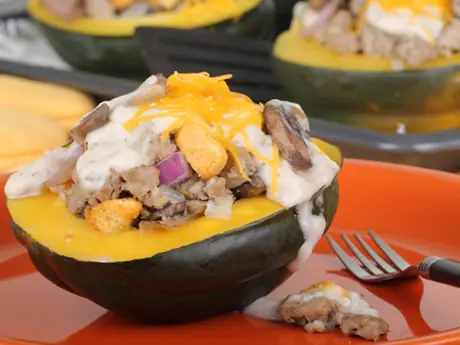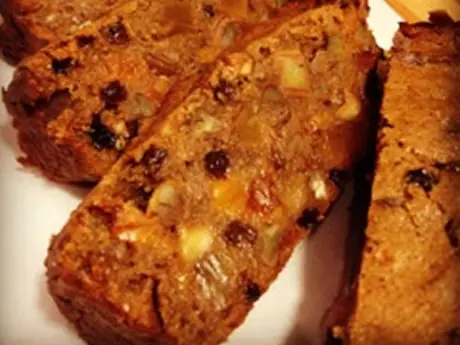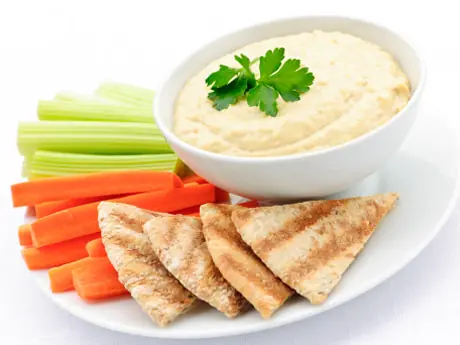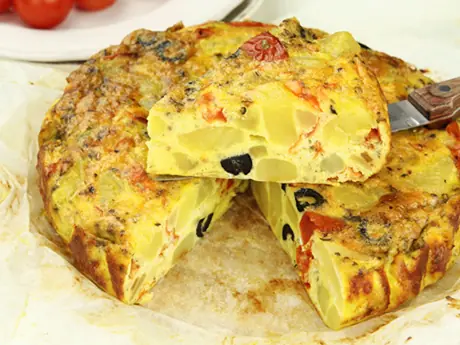Peanuts and Peanut Butter
Why: Just so we're clear, peanuts are legumes, not nuts, and they provide an impressive nutrient powerhouse—in fact, peanuts have more than 30 essential nutrients and phytonutrients. They are a good source of vitamin E, which is known to have antioxidant properties and to boost immune function, and folate, widely known for its role in reducing the risk of certain serious birth defects, such as spina bifida. They also contain niacin, which helps reduce high cholesterol, as well as magnesium, which relaxes muscles and increases metabolism. Plus, they're low in sodium and, like any plant-based food, naturally cholesterol and trans fat-free.Just 2 tablespoons of peanut butter have 7 grams of protein. Protein helps keep you feeling full longer. Peanut butter also contains high amounts of arginine (an amino acid that can improve blood flow) and flavonoids (a type of antioxidant that reduces inflammation and protects against cell damage). It takes 1 pound of peanuts to make 2 cups of ground peanuts, which equals 1 cup of peanut butter. Make sure to get peanut butter that is JUST ground peanuts, nothing else. Smucker's Chunky Natural Peanut Butter is a commercial product that uses only ground peanuts. Also, you might want to try freshly ground almond butter, which is 180 calories for 2 tablespoons.
Nutritional Information: 2 tablespoons: 200 calories, 16 g fat, 6 g carbs, 2 g fiber, 7 g protein
More: Understanding Healthy Fats in Your Diet
Avocados
Why: They're nutrient-dense and packed with antioxidants, vitamins B6, C and E, as well as folate and potassium (60 percent more potassium per ounce than bananas), and they're a great source of monounsaturated fat, which studies have shown to reduce serum cholesterol levels when used in place of saturated fats.
Keep avocados and guacamole in your diet, but avoid the fried tortilla chips and other unhealthy foods that tag along. Serve it in small dishes for portion control, and have it with baked, low-fat chips. Also, you can use avocado slices to replace other high-calorie foods that contain saturated fat, such as whole-fat cheese, which has 100 calories per ounce.
Nutritional Information: 1 avocado, 201 grams or 7 ounces: 322 calories, 29.5 g fat, 17.15 g carbs, 13.5 g fiber
More: 6 Green Super Foods to Add to Your Diet
Dried Fruit
Why: In terms of the antioxidants contained in dried fruit, research published in the Journal of the American College of Nutrition reported that dried figs and dried plums (prunes) have the best nutrient score. Additionally, the researchers concluded, "Dried fruits have a greater nutrient density, greater fiber content, increased shelf life, and significantly greater phenol antioxidant content compared to fresh fruits. The quality of the antioxidants in the processed dried fruit is the same as in the corresponding fresh fruit." However, vitamin C, which is present in many fresh fruits, is destroyed by heat in the drying process.Dried fruit is high in fiber and carbohydrates and low in fat. It has significant antioxidant value; however, because it's dried, its nutrients are very concentrated, and so are its calories.
Nutritional Information:
Apples
Fresh, raw (1 medium), 72 calories, 3.3 g fiber
Dried: (25 pieces/slices/1/3 cup), 110 calories, 3 g fiber
Apricots
Fresh, raw (3 apricots), 50 calories, 2.1 g fiber
Dried: (6 pieces), 90 calories, 3 g fiber
Bananas
Fresh, raw (1 medium), 105 calories, 3.1 g fiber
Banana chips: (1 ounce/22 chips), 147 calories, 2.2 g fiber
Blueberries
Fresh, raw (75 berries), 58 calories, 2.4 g fiber
Dried blueberries, sweetened 1/4 cup/75 berries), 150 calories, 4 g fiber
Cherries
Fresh, raw, (27 cherries), 116 calories, 3.9 g fiber
Dried: (1/3 cup/27 cherries), 160 calories, 1.5 g fiber
More: Learn to Snack Strategically
Grapes
Fresh, raw: (1 cup), 62 calories, 0.8 g fiber
Dried raisins (1 small box/1.5 ounces), 129 calories, 1.6 g fiber
Mangoes
Fresh, raw (1 cup sliced), 107 calories, 3 g fiber
Dried, unsweetened (6 slices), 106 calories, 1 g fiber
Papayas
Fresh, raw (1 large), 148 calories, 6.8 g fiber
Dried (2 spears/1.5 ounces), 140 calories, 1 g fiber
Peaches
Fresh, raw (1 medium), 58 calories, 2.2 g fiber
Dried (1 ounce), 140 calories, 1 g fiber
Pineapple
Fresh, raw (? -inch-thick slice/ring), 40 calories, 1.2 g fiber
Dried (1 ring), 70 calories, 1 g fiber
More: 5 Underrated Weight-Loss Strategies
Olive Oil
Why: The Food and Drug Administration has granted olive oil a qualified health claim. Manufacturers are now allowed to state on the label that: "Limited and not conclusive scientific evidence suggests that eating about 2 tablespoons (23 grams) of olive oil daily may reduce the risk of coronary heart disease due to the monounsaturated fat in olive oil."The allowable claim goes on to say that: "To achieve this possible benefit, olive oil is to replace a similar amount of saturated fat and not increase the total number of calories you eat in a day." Why? Because oil has about 120 calories per tablespoon. So, if you don't use it as a replacement, you could put on about 25 pounds in a year by following only the first part of the advice. Oh, and keep in mind that "light" olive oil does not have fewer calories – it's just lighter in color.
Nutritional Information: 1 tablespoon: 119 calories, 0 g carbs, 13.5 g fat, 0 g protein
More: 5 Oils Perfect for Everyday Use
 Perfect your nutrition to boost your performance. Sign up for a race near you.
Perfect your nutrition to boost your performance. Sign up for a race near you.- 2
- of
- 2








Discuss This Article